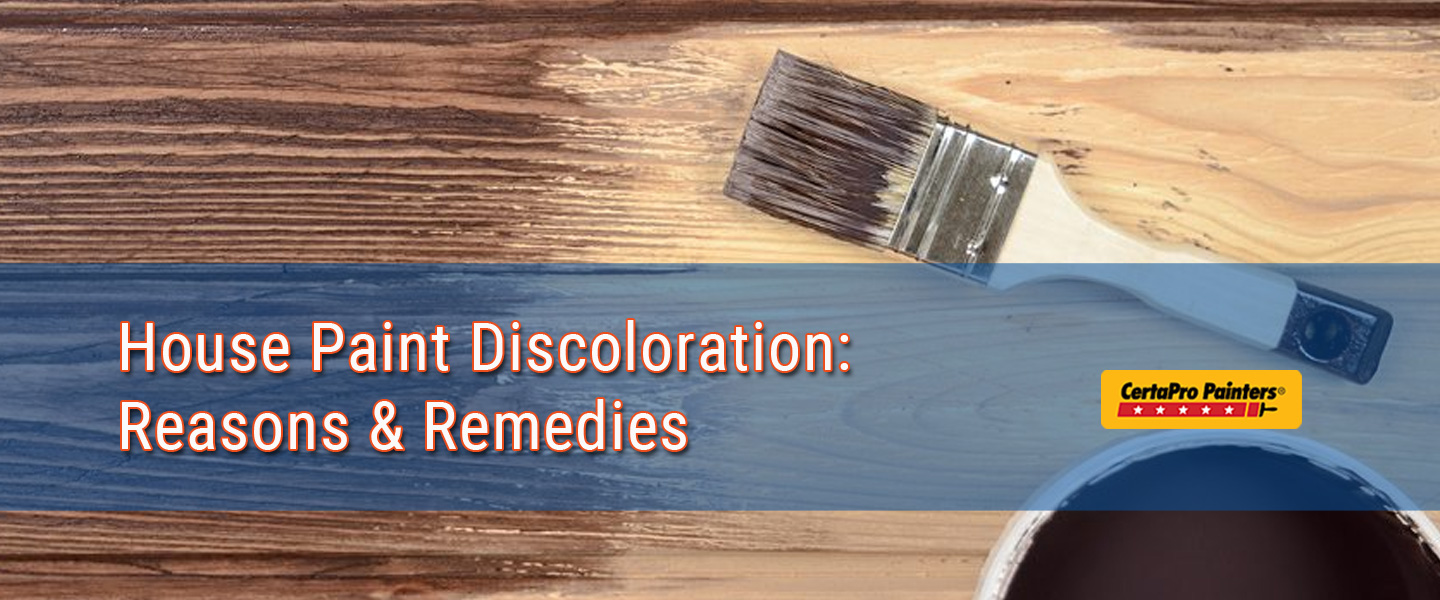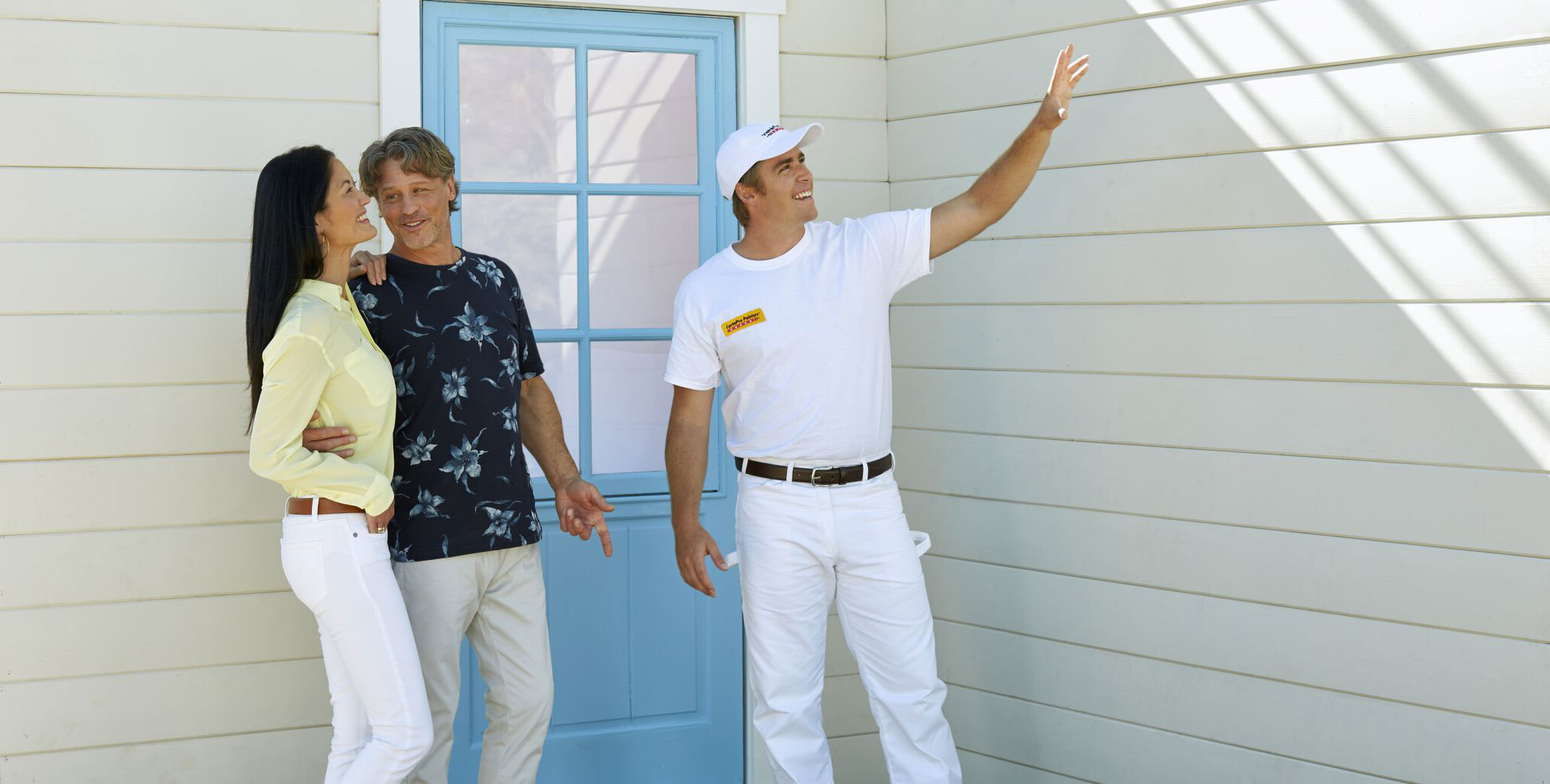
House Paint Discoloration: Reasons and Remedies
Posted on January 24, 2020
You spend a lot of time and money keeping your home pristine. Paint is only so strong even under the best of conditions. Simple dirt or wind can take away from the vibrancy of color. But when is house paint discoloration more than a dirty patch and something to be addressed?
Here are the most common reasons for discoloration of house paint with our repair suggestions.
Mildew
Reason: Mildew is a stain made up of fungi or microscopic plant life, and is most common in damp, humid areas. It can also be found in cooler climates. It can turn your house black, green or other colors. While mildew can develop in any areas of the outside of your home, it’s most likely you’ll find it behind trees or shrubs where the air movement is less prevalent.
To see if you are dealing with mildew: use a drop or two of household bleach on the area where the discoloration is happening. Mildew will disappear from sight after a couple minutes. If it does not disappear, it’s more likely another kind of stain.
Repair: Purchase a mildewcide. It will be a paint labeled specifically with mildewcide. When this is put on to a clean wall, it will prevent future mildew outbreaks.
Water-Soluble Extractives
Reason: Some woods contain extractives which give the wood its sought-after color, but also can discolor paint. When the extractives react with paint, water is usually involved. The extractives are dissolved and leached from the wood by water. This moves the paint surface, evaporates and leaves the extractives behind, as a red-brown stain.
Repair: Good painting practices will solve your water-soluble extractives issues. Use a water-repellent preservative on the wood before staining or priming. Oil based, stain resistant primers are best for dealing with wood the contains extractives.
Iron Stains
Reason: Rust may be present on your house if iron nails were used to attach the siding or wood to the walls. You will notice a red-brown stain around the nail head or running down from it. To prevent this, corrosion-resistant nails are available in galvanized or stainless steel or aluminum.
Repair: Any nails causing this issue will need to be countersunk, caulked, spot primed and painted.
Blue Stains
Reason: If a random blue stain appears on your walls, you are most likely dealing with a microscopic fungus that infects the wood. If it is in a water-prone area, the moisture content will help the fungus thrive.
Repair: To remove the stain, use water repellent preservatives before repainting the area. For a temporary fix, you can use household bleach to remove the discoloration.
Also, it is important to find the water source which is feeding the fungus. Take time to see if eaves and roof angles are sloped to avoid water running in this area or pooling around it.
Chalking
Reason: Some paints will gradually deteriorate and release pieces of the pigment. It looks like a powder on top of the paint surface. A majority of paints will chalk at some point in their later years.
You can prevent chalking by choosing a paint that has been manufactured specifically to chalk slowly.
Repair: It is of the utmost importance to prepare the surface appropriately. Scrub away any dirt or chalk that remains on the walls. Rinse very thoroughly. A high quality oil-based primer will create a good adhesion for your new latex top coat.
Resin Brown Spots
Reason: Knots in softwoods contain and expel resin. The resin can cause paints to either peel or turn brown.
Repair: Before painting any wood, use a good primer first. Always apply two coats of paint. Do not use shellac or varnish on knot areas because it is sure to cause early paint failure.
Is it time for a fresh coat of paint in your home? Contact us today for a free, no-obligation estimate.






